Kirby Larson's Blog, page 34
May 7, 2013
Teacher Tuesday
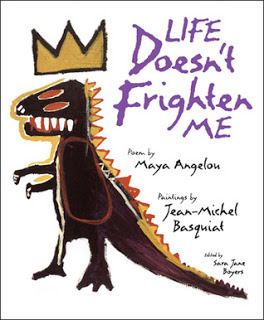
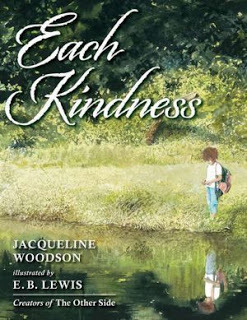
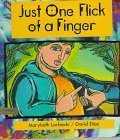
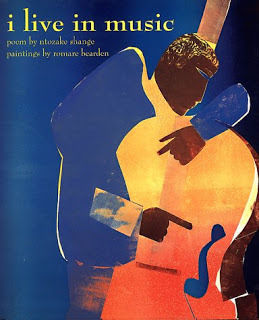
How oh how did I become acquainted with Erin Fitzpatrick-Bjorn? Did I visit her school? Did we meet at a Powell's book event? I honestly don't remember. All I know is that I'm very glad we made a connection. Erin is the K-8 District Media Coordinator for the Gresham-Barlow School District in Gresham, Oregon, engaging with sixteen schools across the district. Erin is a children's literature powerhouse and I am so pleased to be sharing her insights with you today.
But first, a peek at her past:
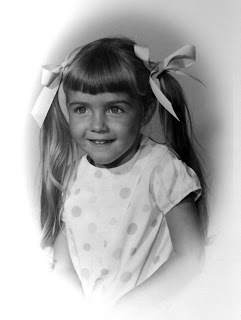
Favorite school lunch as a kid: Whatever my mom packed! But what I really loved was that every day she would write a little something on the napkin she put in my lunch. Sometimes it was a poem or a saying, sometimes a word of encouragement, or sometimes just an I love you. Best friend in grade school: Cindy Chimienti. We’re still friends now! Times you were the new kid in school: Just once, in fifth grade. Well, I guess when I went to high school, too, but everyone was new then.Teacher who inspired you to stretch: MaryAnn Allegretto and Bill George were the two that inspired me to stretch, in completely different ways.The one thing you always wished you could do in grade school but never achieved: Wow, I’m not sure. I think maybe speak French. I took a little after school class, but I never really got the hang of it. I can still say the days of the week, though!
Erin, you mentioned that you’d like to talk about using picture books for middle school lessons.What prompted you to begin using picture books with this age group?
My mentor librarian, the teacher who inspired me most to stretch as a teacher, was the one who introduced me to this idea when I was a classroom teacher.
In what ways do you use picture books with middle schoolers?
I’ve used picture books in many ways with middle school students. I’ve used them to introduce an idea like racism. I’ve used them in poetry lessons. I’ve used them to explore a concept more deeply, like the freedom of speech. I’ve used them to celebrate special events like Dr. Seuss’s birthday and Earth Day. I’ve used them to explore art and artists.
Even though many libraries call picture books “Everybody Books,” I’m guessing you may have encountered some resistance with your students. Have you? If so, how did you counter it?
Middle school students are smart and can be pretty sophisticated, and they hate being treated like little kids, so I was always very clear about why I was using a picture book right from the start. We talked about our focus and how the book(s) fit into that focus, and I talked with students about the different levels of meaning that can be found in picture books, and explored with them how sophisticated many picture books are (See: What has surprised you the most below). They actually really enjoyed using picture books, and I rarely encountered opposition. If you create meaningful lessons and set them up well, no matter your vehicle, I find that students generally respond positively.
There’s also a little nostalgia piece in the reading of picture books that appeals to middle schoolers. They truly are still kids, no matter how much they want you to believe they’re not. And most of them have a fondness for picture books. I think holding a picture book is a comfortable place for them.
How do you select titles?
When I was a classroom teacher, my school librarian helped me a ton. She knew picture books, and I did not. Now I’m much more familiar with what’s out there, and, more importantly, I know where to look for ideas, so it’s easier. Basically, there are three really important elements I think about when searching for a picture book. First, it has to be beautiful. Not averagely beautiful, but incredibly beautiful. Of course it has to be thematically related to what I’m doing. Finally, it has to have points where I can stop and have students think and respond. Some of my favorites that fit these criteria are:
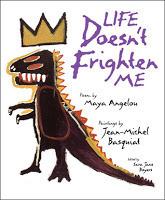 Poem by Maya Angelou, Paintings by Jean-Michel Basquiat
Poem by Maya Angelou, Paintings by Jean-Michel Basquiat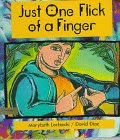 By Maribeth Lorbiecki and David Diaz
By Maribeth Lorbiecki and David Diaz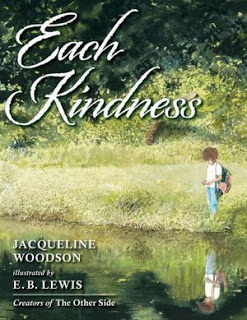 By Jacqueline Woodson, illustrated by E.B. Lewis
By Jacqueline Woodson, illustrated by E.B. Lewis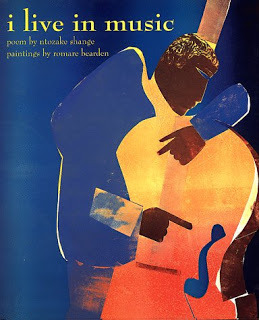 Poem by Ntozake Shange, illustrated by Romare Bearden
Poem by Ntozake Shange, illustrated by Romare Bearden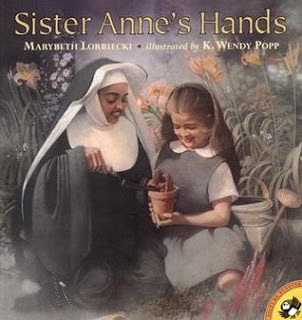 By Maribeth Lorbiecki, ilustrated by K. Wendy Popp
By Maribeth Lorbiecki, ilustrated by K. Wendy PoppWhat has changed in your classroom/library since you’ve begun incorporating picture books? Changes in students’ skills or interest in reading?
I’m not sure I can make a direct correlation between changes in skills or interest in reading with the use of picture books, but I will say that starting students out with picture books as a way of guiding discussion did lead to richer discussion when we moved further along with a topic.
What has surprised you the most about sharing picture books with middle schoolers?
One thing that surprised me about the whole experience was the level of sophistication, depth, and variety in picture books. I wasn’t a librarian when I started doing this, and I wasn’t a parent, so I really hadn’t spent a lot of time with picture books since I was a kid myself. It’s quite astonishing what’s out there. There’s a picture book on nearly any topic you might want to teach. And the quality of so many picture books is incredible. These writers and illustrators are gifted at exploring and exposing our world and our humanity in ways both serious and fun.
Would you encourage other middle school teachers/librarians to use picture books? Why or why not?
Yes, yes, and yes! I think teachers and librarians will find this to be a great way to engage students of all levels. the students I have worked with have really enjoyed using the picture books. A bonus to the whole process, of course, is that struggling readers aren’t excluded from a reading activity with all kinds of depth and don’t feel like the odd man out. Low readers, as we know, can be excellent thinkers, but it’s often challenging for them to fully participate in an activity that requires reading something at a level beyond their skills.
What do you wish you’d known when you started?
I wish I would have been more familiar with what was out there, and I’m so lucky I had an incredible school librarian to work with. Unfortunately, I know all too well that there are fewer and fewer school librarians out there to partner with. Public librarians, however, are also an amazing resource, and if you don’t have a school librarian, definitely consider partnering with your public library for information and resources.
What kinds of outside resources, if any, do you employ (Skype, author websites, guest speakers)?
Ha! Skype wasn’t even a thing when I was in the classroom, that’s how old I am, but using Skype is a terrific idea to enrich this experience even more.
What do you wish I’d asked you that I neglected to ask? Maybe what I’ve finished reading recently that I really enjoyed? Why thanks for asking I recently finished Hattie Ever After and I thought it was just terrific! I’m a tough sell on sequels, but this one was a delight from start to finish. I just love that spunky young woman! And the woman who writes about her is pretty cool, too.Ahem, I'm a little embarrassed about that, Erin, but also very grateful for your endorsement and support. . .and your blog review!
But mostly my inner eighth grader is very sad I did not have a savvy librarian like you in my school. Thank you for understanding that middle schoolers need picture books!
Want to hear more of what Erin's thinking? Follow her on Twitter: @aweekoraweekend
Check out her books blog here. Check out the travel blog Erin writes with her husband here.
Published on May 07, 2013 06:30
May 3, 2013
Friend Friday
Helen Sedwick and I share a passion for historical fiction and that's why she contacted me to tell me about her first book, Coyote Winds, and she was gracious enough to gift me with the ebook.
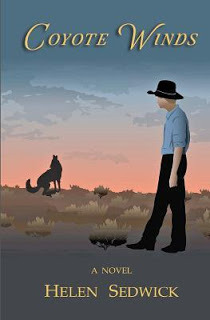
Here is the book's description: "Set on the broad expanse of the prairie, COYOTE WINDS portrays the unfenced boyhood of Myles Vincent as he hunts rabbits, snares rattlesnakes, and tames a wild coyote pup in the 1930s, and then watches the life he loves disappear in the wind. It explores the American spirit that drew families to the frontier and the consequences of that spirit, both good and bad. And it asks whether that spirit will survive the over-supervised life of a modern boy."
Kirkus calls it "a well-crafted, entertaining read," and ForeWord Reviews says, "Young readers will be drawn into an engaging story that broaches serious questions about family, the American spirit, and hope."
Kind of hard to resist a story with this opening line: "Only when the gopher fell from the sky, nearly hitting him, did Myles Vincent put down his ax and look up."
Check out Helen's book today!
Published on May 03, 2013 06:00
May 2, 2013
Thursday's Thought
“If you don't have time to read, you don't have the time (or the tools) to write. Simple as that.”
Stephen King
Stephen King
Published on May 02, 2013 07:00
April 30, 2013
Teacher Tuesday
I met today's featured reading teacher through the blog she writes with Jen Vincent, Teach Mentor Texts. One thing led to another, and now I call Kellee Moye a good friend. . .who simply lives 3000 miles away. She teaches at Hunter’s Creek Middle School in Orlando, Florida. There, she works with all grades though this year her focus is on seventh and eighth, in addition to serving at the yearbook teacher AND the Future Problem Solver’s advisor AND Developmental Language Arts ESOL teacher. (note from Kirby: when does Kellee sleep?!)
Our tradition here is to take a peek into Kellee's past before diving into a discussion of how she connects kids and books. Here we go:
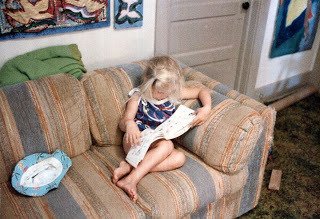 Reading at a young age Favorite school lunch as a kid: My mom made my lunch 95% of the time. Lucky for her, not so lucky for my future self-control, I was not a picky eater like my sister who was very specific about what she wanted to eat. My only requests were no peanut butter and jelly, if there had to be peanut butter, add honey, and I liked getting a pickle in my lunch. The only days I didn’t eat my mom’s lunch was on pizza day where I begged to buy lunch.Best friend in grade school: I went to K-3 in Davenport, IA at Garfield Elementary and my best friend, Andrea, lived up the street. I remember that we used to hang out in her basement and play Nintendo (I didn’t have one yet) and jump on her trampoline. I also had 2 boys that were my school friends. They were twins, Jaime and Jeff, and I’ll remember them forever, because they gave me my first baseball mitt. When I moved to Austin, TX, I met Allison Gandy in sixth grade and we were best friends all the way through middle school (though we have lost touch and I would love to speak to her again!). Times you were the new kid in school: I wasn’t an army brat, but I called myself an art museum brat. My dad directed art museums and since it is a job that takes moving museums to grow within the industry, we moved 3 times when I was a kid. I went to 2 different elementary schools, 1 middle school, and 2 high schools. The hardest move was moving a month into ninth grade.Teacher who inspired you to stretch: For my entire student career, I felt that I was a good student, but not exceptional at anything. Then, when I was in twelfth grade, I entered Ms. Haley’s infamous classroom. At the time that I was in Ms. Haley’s English class, she was 87 years old and had been teaching in the same room since she was 18. The building was named after her. She was quite intimidating and at first I thought she didn’t like me; however, I soon realized that she just was pushing me harder than any teacher ever had before. She was the first teacher to ever tell me that I was one of the best at something (writing) she’d ever seen and that I could succeed. It is because of her that I chose to get my bachelor’s degree in English Literature. She changed my life as well as hundreds (maybe thousands) of other students.The one thing you always wished you could do in grade school but never achieved: Looking back I wish that I had continued doing many things that I quit: ballet in elementary school, softball in high school, cello in college, etc. I don’t have many other regrets about my childhood though maybe some about high school. I do wish that I was still in touch with many of the friends I remember so fondly.
Reading at a young age Favorite school lunch as a kid: My mom made my lunch 95% of the time. Lucky for her, not so lucky for my future self-control, I was not a picky eater like my sister who was very specific about what she wanted to eat. My only requests were no peanut butter and jelly, if there had to be peanut butter, add honey, and I liked getting a pickle in my lunch. The only days I didn’t eat my mom’s lunch was on pizza day where I begged to buy lunch.Best friend in grade school: I went to K-3 in Davenport, IA at Garfield Elementary and my best friend, Andrea, lived up the street. I remember that we used to hang out in her basement and play Nintendo (I didn’t have one yet) and jump on her trampoline. I also had 2 boys that were my school friends. They were twins, Jaime and Jeff, and I’ll remember them forever, because they gave me my first baseball mitt. When I moved to Austin, TX, I met Allison Gandy in sixth grade and we were best friends all the way through middle school (though we have lost touch and I would love to speak to her again!). Times you were the new kid in school: I wasn’t an army brat, but I called myself an art museum brat. My dad directed art museums and since it is a job that takes moving museums to grow within the industry, we moved 3 times when I was a kid. I went to 2 different elementary schools, 1 middle school, and 2 high schools. The hardest move was moving a month into ninth grade.Teacher who inspired you to stretch: For my entire student career, I felt that I was a good student, but not exceptional at anything. Then, when I was in twelfth grade, I entered Ms. Haley’s infamous classroom. At the time that I was in Ms. Haley’s English class, she was 87 years old and had been teaching in the same room since she was 18. The building was named after her. She was quite intimidating and at first I thought she didn’t like me; however, I soon realized that she just was pushing me harder than any teacher ever had before. She was the first teacher to ever tell me that I was one of the best at something (writing) she’d ever seen and that I could succeed. It is because of her that I chose to get my bachelor’s degree in English Literature. She changed my life as well as hundreds (maybe thousands) of other students.The one thing you always wished you could do in grade school but never achieved: Looking back I wish that I had continued doing many things that I quit: ballet in elementary school, softball in high school, cello in college, etc. I don’t have many other regrets about my childhood though maybe some about high school. I do wish that I was still in touch with many of the friends I remember so fondly.Kellee, you’ve recently made a switch in your teaching, changing from teaching language arts to teaching intensive reading. Can you share some of the differences you’ve noticed in these student populations?
The biggest change between teaching ELA and an intensive class is that the students I get are so defeated. Many of them have been in a reading intervention class since they first took the state test in third grade and by eighth grade they are done with it. It doesn’t help that they lose two electives to be in my class as well. So, I find myself worrying a lot more about relationships and teaching to the needs of my students. When a relationship is built, the students not only don’t hate coming to my class, they enjoy it. All of a sudden reading, a task they’ve always hated, is not so tedious. Also, if I make sure that I am only teaching what they need, they don’t feel like the class is a waste of time. I am very open with them about how I choose what to teach and I often ask for their input. For the first time for many of them, they feel like they can succeed.
Can you share some of the challenges these struggling readers face?
Confidence. Many of my kids think they will always be bad students in the bad class. It is so hard to break them of this and it is something that you are not taught in education classes. I also find that many of them have learned to fake so well that it is hard to pinpoint what it is they need help in to successfully read well. A teacher of struggling readers needs to really figure out what each student needs to become a stronger reader.
What are some of the ways you’ve changed your teaching methods to reach this group of readers?
When I taught language arts, there was a curriculum that each grade had to teach. It wasn’t so student-based. Now, I do everything based on student needs. We are doing a lot of pre- and post-tests and reteaching, but it is all built around my students.
How do you help these readers feel more at home in the library?
I spend a long time at the beginning of the year just introducing my students to books. Many of them have never finished a novel; they hate reading, and couldn’t find a book they’d like by themselves. So, for the first six weeks, we do genre studies, book talks, book passes, etc. just to help students become more comfortable. Soon they are begging to read all of the time because they finally realize that there are books out there that they enjoy.
How do you help these readers feel more at home with literature?
In general, my students can read whatever they want independently and if they aren’t liking or aren’t comfortable with what they are reading, they can switch it out. This gives the students a feeling of power that they don’t have when there are certain requirements and stigma around reading different types of texts like graphic novels. In a class setting, struggling readers need more scaffolding because they may not have the prior knowledge or reading ability to read certain pieces of literature. This means lots of chunking and thinking aloud to help them feel their way through.
Why is it important for struggling and reluctant readers to learn to embrace reading?
From the very first day, I use a sports analogy to help my students understand the importance of reading. Many of them play sports and hope to one day play them professionally, so I ask if any of them practice the sport they want to do for a living. Of course, every single one of them raises their hands. I then ask how many of them want to go to college. Again, everyone. I tell them that college is like a sport and you have to practice hard to get good and reading is that practice. This really helps them realize that they can’t just read in school if they hope to succeed, they really need to embrace it and push themselves. I know that this seems like it makes reading work, but the first step towards having my students enjoy reading is to help them understand why.
What skills do you see your students gaining from the techniques you’ve employed?
Many of my students become better readers simply due to the fact that they are reading more. I also work on good reading strategies with them like making connections, visualizing, comparing/contrasting, using context clues, etc. And once again, the more we practice the better they get. It is amazing to watch students’ reading levels jump entire grade levels just because they finally understand why they should read and how they should read.
I also read aloud daily to my students and this helps not only build community around a novel, but it is a wonderful time in my classroom- all students are engaged and on the edge of their seat waiting to see what happens next. My favorite read aloud this year has been The One and Only Ivan by Katherine Applegate.
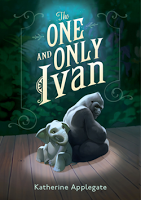
Soon we will be reading Hurt Go Happyby Ginny Rorby
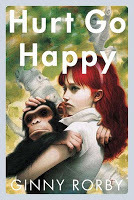
and Endangered by Elliott Schrefer.
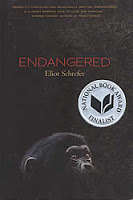
(As you can tell, I am very fond of apes!)
Do you have a favorite anecdote of how a particular book has impacted one of your struggling readers?
I have so many stories about books that have changed students’ point of view, but my favorite is probably a boy I have in my eighth grade class (we’ll call him J) who at the beginning of the year was quite gruff, and firm in his dislike of reading. I struggled to find anything that would hold his interest. Then, one day I was book-talking Half Brother by Kenneth Oppel that I had just finished listening to.
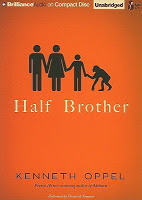
I was explaining how I couldn’t leave my car, because I had to know what happened, and that I found myself crying. The students asked what the book was about, I explained, and J right away said he wanted to read it. I’ll be honest, I was skeptical that he would be able to make it through a 375 page book when he had never finished a novel on his own. I shouldn’t have doubted him, because by the end of the week he was in the 100s then over the weekend he read over 150 pages and could not stop raving about how amazing the book was. J finished Half Brother in just over two weeks and still talks about it today (seven months later). He has not stopped reading since.
What are some of the titles that have made a big difference for your students?
Other books that I have seen really change a students’ attitude about reading this year are the Amulet series by Kazu Kibuishi,
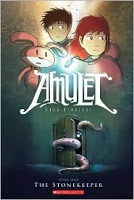
Mary Downing Hahn’s ghost stories,
Fallenby Lauren Kate,
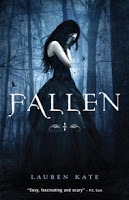
Smile by Raina Telgemeier,
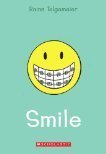
the Bluford series,
Knights of the Lunch Table series by Frank Cammusso,
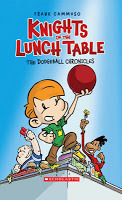
Bone series by Jeff Smith, Wonder by RJ Palacio, The One and Only Ivan by Katherine Applegate, Crankby Ellen Hopkins,
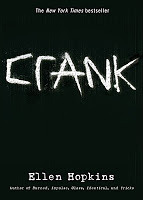
Liam O’Donnell’s Graphic Guide Adventures, Go Ask Alice by Anonymous, and, of course, the Diary of a Wimpy Kid and Big Nate series. These are just the tip of the iceberg.
If you could create a library for your readers – and funds were no object! – what would it look like?
I, luckily, have a classroom library of over 2500 books for my students, but I always seem to never have enough. If I was going to add to my library, I would make sure to have a copy of every graphic novel, as well as books that ranged over all reading levels. Mostly, I just wish that I had an infinite supply so that no matter what a student wanted, I would have it.
What could publishers/authors do to help your reluctant readers be less reluctant?
Publishers and authors have already begun to make a big change to help reluctant and struggling readers- they have realized that illustrations within a book doesn’t mean the book isn’t of good quality. My students love illustrations and specifically graphic novels.
I would also urge publishers and authors to not be too caught up in Lexiles and reading levels. Although common core is coming, we all (teachers, authors, publishers, etc.) need to realize that complexity does not mean that the book tested out to be a certain number; complexity is relative and is based on more than just these numbers. It is based on qualitative, quantitative and reader/task considerations. Just continue making the quality literature at all levels, about all topics, and in all formats.
Wow. I am so grateful you are there for your students, Kellee! This is one powerful post. Thank you.
Kelle is currently blogging with Jen Vincent at Teach Mentor Texts, though this summer they will be parting ways and Kellee will be starting her own blog with ALAN board member Ricki Ginsberg, titled Unleashing Readers: Helping Students Navigate the World of Books. You can also follow Kellee on Twitter, @KelleeMoye
Published on April 30, 2013 06:00
April 26, 2013
Friend Friday
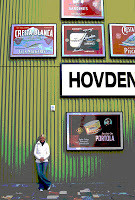
I met Rhonda McCormack at an amazing (and mostly scorpion-free!) SCBWI retreat in Arizona (kudos to Michelle Parker-Rock and her posse for a great weekend). She has a passion for writing and philanthropy that she combines in a wonderful way. Her first book, Wildflowers, is now out and I invited her to tell us a bit about it and how it came to be. Take it away, Rhonda!
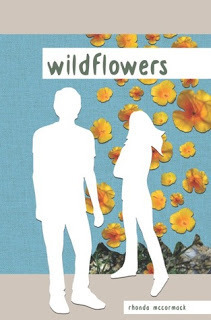
Hello, Kirby’s Lane Readers. I’m Rhonda McCormack, Indie author and artist, invited to Friend Friday to share a bit of my journey into the growing world of Independent (Indie) publishing. I thank Kirby for hosting me. As a long-time fan of her blog and books, I’m honored to provide a guest post. I’d also like to congratulate her on Hattie Ever After, a lovely follow-up to HBS and a new personal favorite. Kirby, I wish you oodles of praise and abundant readership.
In mentioning Kirby’s latest book, I’m reminded of the day I began drafting this post. I’d just finished the novel and had Hattie on my mind. Off to a foreign place, where things move fast and life lessons abound. Interesting, I told myself. That sounds like Indie publishing. Like Hattie, I had an idea of what could be discovered and accomplished when I arrived in a new place, but a year later, I admit what I knew was ‘eh’ and what I learned reshuffled my deck.
So what is the Indie movement all about? Well, in short, Indie publishing is a hybrid creation, borrowing the tools from the self-publishing model and the guidelines of traditional publishing to create a community of authors/artists who, as individuals, behave like a traditional press. In other words, the Indie book author commits to being a responsible steward of words, art, design, and even marketing, and in the end, offers well-crafted, quality works of art. Because books are works of art.
For me, learning details about the movement happened organically over the six months I spent readying my novel for publication. Information was scattered everywhere, though, and after I launched my debut title, I published a series of blog posts called the Indie Publishing Equation hoping to help others just starting out. I explained the process from start to finish, trying to stick to facts but wading into opinion every now and again. In the short space of now, even a brief summary would take up valuable space that I’d rather use telling you things that no one told me, but I found to be useful.
So, let’s say we all understand online publishing. We know that the two choices for online self-publishing are print-on-demand (POD) and eBooks. Let’s say we also know that, like most things technology-related, as online publishing becomes more popular, it gets easier to use with more sophisticated options. And truthfully, a self-published book today can equal the quality of those produced by traditional presses and sold in brick-and-mortar stores…if written and designed well.
Ah, there are the magic words we needed to hear. The ones that launched the Indie publishing movement. Let’s repeat them, if written and designed well. Mmm, yes, we can all understand that. But…wait…how do we do that?
My advice is simple. First, learn all you can. Second, consider if it’s a fit for you. Third, create to your highest good. And I mean for you to do these things with both Indie publishing and your writing.
To learn: Read a book, use Google, or go to the source (Createspace, Lulu, KDP, PubIt, Smashwords). Also, by joining a writing organization you can learn about traditional publishing, which some find to be a better option because it’s a place where professionals (who are really good at their jobs) guide you. I belong to SCBWI, and there are other groups in specific genres like romance and mystery.
To consider: Not to get all squishy on you, but this is a time for self-reflection. How are you with risk? Are you self-motivated, even when frustrated by the unknown? Do you ask for help when needed? Can you embrace a more innovative, patient, and persistent you? Will you commit to quality without getting lost in perfection? These are important tenets at all stages, including marketing.
To create your highest good: Be well-read, well-rested, and well-nourished in mind, body, and spirit (sorry, more squish, but it’s true). Also, write, write, and then write some more. It’s the only way to improve.
Once you decide what’s right for you, just take one step after another. And like our friend Hattie, remember to be open to the Ever After, in whatever form it takes.
And here’s a happily ever after just for Kirby Lane Readers: The first reader to make a comment below wins a free, signed copy of wildflowers, my YA ecotopian novel.
To learn more, please visit my blog where you can see the Indie Publishing Equation and marketing in action with my Earth Day celebration hosted by The fRead Project. To read more about my journey, this interview at Chroi and Me, Meet the Writer Series explains lots.
Thank you, Rhonda, for sharing all this great information, and for modeling what it takes to get one's book out there. Readers can follow Rhonda on Twitter: @rmackwrites
Published on April 26, 2013 06:30
April 25, 2013
Thursday's Thought
“Nothing's a better cure for writer's block than to eat ice cream right out of the carton.”
Don Roff
Don Roff
Published on April 25, 2013 07:00
April 23, 2013
Teacher Tuesday
May I just say that Cynthia Alaniz is a real Nerd? And I mean that in the most complimentary way. Along with teaching fourth grade at Denton Creek Elementary in Coppell, Texas (near Dallas), Cynthia has posted many times over at the Nerdy Book Club.
Before we learn about why libraries have been/are so important to Cynthia, we're first going to take a peek at her past.
Favorite school lunch as a kid: I really don’t remember my school lunches as a kid. I do remember visiting my grandmother after school, and she always had Neopolitan ice cream for us as a treat. That meant a lot to me!Best friend in grade school: Friendships were tough for me because I was so shy. I was much more comfortable with books, and they were my friends. They were always there, and I learned a lot from them.Times you were the new kid in school: I moved twice: once when I was in 3rd grade, and then when I was a freshman in high school. It’s tougher to move when you’re in high school, but I devoted myself to learning and reading so I survived and made it through!Teacher who inspired you to stretch: I’d have to name two: 1) Mrs. Fulfer, my 3rdgrade teacher walked over to my desk one day and said these words to me: “You are a writer. Keep at it. “ I never EVER forgot that. (I also will never forget the cute white shoes she wore!) 2) My 6th grade teacher, Mrs. Garcia, was the first teacher to give me a book of my very own. It was Mrs. Frisby and the Rats of NIMH. I’m not sure what happened to that copy, but that moment was magical. Up to that time, all my books had come from the public library.The one thing you always wished you could do in grade school but never achieved: I think I did the best I could with what I had, so I don’t really have any regrets. I wished for many things, but I realized that a better life was up to me. Everything helped me become who I am today.
Cynthia, you told me that you wanted to talk about libraries and how important they’ve been in your life. What a great topic! What prompted you to suggest it?
I am currently enrolled in a library and information science graduate program—“library school” as I call it. I’m studying to become an elementary librarian! I am learning about libraries every day in my courses and I continue to be amazed at all the wonderful things libraries and librarians do for us. Libraries are wonderful places that provide necessary services for learner of all ages. They have a rich history, and I marvel at librarian friends who do so much at their libraries to meet their patrons’ needs and offer them resources.
Tell us a bit about your library history. Talk about that first library outing, librarians who made a difference, etc.
As a kid, any books in my house were ones I brought in myself. If it weren’t for my school and public libraries, I would never have had access to books. During the school year, I practically lived in the school library. I felt very comfortable there, and it was a place that gave me hope because it was filled with books and possibility! There, it felt like I could do anything! I checked out as many books as I was allowed. (I read every single book I checked out, and I always returned them on time.)
During the summer months, there were no summer camps or family vacations for me, so the programs at the public library were my entertainment and fun. (My first experience with board games came from the library.) I remember it not just for the books, but also for the experience. I went there with my sisters just about every day. We’d walk the nine or ten blocks to the library in the hot morning sun, pulling our empty red wagon. Then we’d check out books, and the wagon was filled for the way back home. We’d return the next day for more!
I wish I could tell you I remember my librarians: I really don’t. But they must have been kind to me, because I was there so often, and I don’t remember them ever being mean. They let me wander and explore and read—unencumbered. I must have been a sight! I wish I could thank them now. They never knew just how much they did to make my life better.
How has your experience with libraries impacted your own classroom library collection?
Libraries have always held such possibility for me. The simple act of picking up the right book on the shelf could translate into an unforgettable experience with a story. I want to create that for my own students in my classroom as often as possible. I buy every book I can! Students in my school refer to my classroom as the “upstairs library”.
What is your philosophy about going to the library? About building a library?
What a glorious place the library is! It’s a place with books gathered especially for us, staffed by a librarian who is ready to connect us with information. How truly wonderful it is that we can walk into a building and browse through shelves of endless books!
I believe classroom teachers should surround their students with as many books as possible. We have a wonderful library at our school, but I know a classroom library is important, too. So I add to it as often as my checkbook will allow. What if the one book I didn’t buy is the one book that is perfect for one reader in my class? I try my best to get the latest titles and newest installments. My classroom library is more than a collection; it’s a teaching tool. I can walk right over with a student to my library and talk about genre, or show them a new title. Many great teaching conversations happen around the shelves. Our classroom library becomes a part of our community.
Why are libraries important?
Libraries connect people to information. With information, we can all do great things. Libraries offer hope, learning, and the possibility of a better tomorrow. In a library, patrons find a gateway to the next step in their lives.
What skills do you see your students gaining from using libraries?
My students are learning how to access information, evaluate sources, and think critically about content. They are developing literacy skills by learning to read in different formats—electronic and print. They are also learning HOW to learn: figuring out what they need to know, information-seeking, then assessing and moving forward despite challenges. Also, my students are learning how to collaborate with others through projects and digital tools.
Do you have a favorite anecdote of how a library visit has changed a child?
I guess my best story is really a collage of many little ones:
Readers in my class who find a book that they connect with.Students from other classes who walk by me in the hallway and share their favorite book with meThe look on a student’s face when you bring the book they’ve been waiting for.A note from a student who says thank you for letting them read.The rush to be the first one to read a new bookOverhearing two students share a bookWatching proudly as one student recommends a book to another mimicking your words
If you could create a library – and funds are no object! – what would it look like?
My dream library would be like everyone’s idea of a perfect living room. You’d find comfortable and cozy places to sit and be alone. Every book you could hope for—new releases especially—would be available in multiple copies and in e-books (if you’d prefer).
Or, if you wanted to meet up with other learners and work together on a project, you could use the collaboration area. You’d have strong free Wi-Fi and access to the latest tech devices (with someone there to show you how to use them). You’d create fabulous products for the world to enjoy and use.
There’d be an area for special events—and learners would connect there to dream new dreams. Authors would visit regularly from around the country and the world, and there’d be book signings where people who might never meet authors COULD.
You could go there to learn more about things you’d heard about, and things you never knew existed. You’d have space to work, learn, and imagine. The building would have beautiful natural light (that would not be harmful to precious collections), and it would be open late into the night—staffed with expert librarians who always had the right answer for you.
Can technology (ie Skype, Twitter) be successfully incorporated into library experiences? If so, how?
Definitely! In my own classroom, Skype has allowed us to connect with authors such as Katherine Applegate, Ame Dyckman, Dee Garretson, Mina Javaherbin, and Christopher Healy. They have given my students the best reading and writing lessons just by talking about their books and creative process. Skype has enlarged our reading community because it’s allowed us to connect with librarians and teachers from around the country. Also, through our class Twitter account, we can share our learning with others.
Yes, I know that technology can be incorporated in the library; in fact, I think it must be! For some students, it is the only access to technology they may have. Through tech, they have greater access to information. That means they will learn more!
How has your love of libraries influenced your career choices?
I know that my love of reading helped lead me into teaching. Books opened up the world to me, and my favorite teachers were instrumental in my accomplishments. I wanted to pay my teachers back by doing the same for other students. Now, as I pursue my own dream of becoming an elementary school librarian, I can see that coming full circle. What librarians do every day is magic. It will be an honor for me to be an elementary librarian.
What do you wish I’d asked you that I neglected to ask?
I wish you had asked me about a time I had met a favorite author!
Last summer, I met Katherine Applegate at ALA Annual. My students designed a banner to thank her for our Skype visit, and I personally delivered it to her. She was so kind, and it was a dream come true! My class and I had read aloud from THE ONE AND ONLY IVAN, and we had all enjoyed it so much. I attended the 2013 ALA Midwinter Youth Media Awards to be there in person if THE ONE AND ONLY IVAN won the Newbery, and when it was called as the winner, I jumped for joy! The next part of the story is that I’ll be there in Chicago to watch Katherine Applegate accept her award and give her Newbery speech! I know I will cry with happiness! And in that moment I know I will think of my students and wish they could be there with me.
Sniff, sniff -- Cynthia: this is the first blog post that's made me cry. Thank you so much for sharing this anecdote and I hope we can be friends even though I did not (and still do not) read every book I check out nor do I turn them in on time.
Cynthia has a teaching/book blog which takes its name from an activity she and I share in common: buying shoes. Visit her at Teaching In Cute Shoes or follow her on Twitter, @utalaniz.
Before we learn about why libraries have been/are so important to Cynthia, we're first going to take a peek at her past.
Favorite school lunch as a kid: I really don’t remember my school lunches as a kid. I do remember visiting my grandmother after school, and she always had Neopolitan ice cream for us as a treat. That meant a lot to me!Best friend in grade school: Friendships were tough for me because I was so shy. I was much more comfortable with books, and they were my friends. They were always there, and I learned a lot from them.Times you were the new kid in school: I moved twice: once when I was in 3rd grade, and then when I was a freshman in high school. It’s tougher to move when you’re in high school, but I devoted myself to learning and reading so I survived and made it through!Teacher who inspired you to stretch: I’d have to name two: 1) Mrs. Fulfer, my 3rdgrade teacher walked over to my desk one day and said these words to me: “You are a writer. Keep at it. “ I never EVER forgot that. (I also will never forget the cute white shoes she wore!) 2) My 6th grade teacher, Mrs. Garcia, was the first teacher to give me a book of my very own. It was Mrs. Frisby and the Rats of NIMH. I’m not sure what happened to that copy, but that moment was magical. Up to that time, all my books had come from the public library.The one thing you always wished you could do in grade school but never achieved: I think I did the best I could with what I had, so I don’t really have any regrets. I wished for many things, but I realized that a better life was up to me. Everything helped me become who I am today.
Cynthia, you told me that you wanted to talk about libraries and how important they’ve been in your life. What a great topic! What prompted you to suggest it?
I am currently enrolled in a library and information science graduate program—“library school” as I call it. I’m studying to become an elementary librarian! I am learning about libraries every day in my courses and I continue to be amazed at all the wonderful things libraries and librarians do for us. Libraries are wonderful places that provide necessary services for learner of all ages. They have a rich history, and I marvel at librarian friends who do so much at their libraries to meet their patrons’ needs and offer them resources.
Tell us a bit about your library history. Talk about that first library outing, librarians who made a difference, etc.
As a kid, any books in my house were ones I brought in myself. If it weren’t for my school and public libraries, I would never have had access to books. During the school year, I practically lived in the school library. I felt very comfortable there, and it was a place that gave me hope because it was filled with books and possibility! There, it felt like I could do anything! I checked out as many books as I was allowed. (I read every single book I checked out, and I always returned them on time.)
During the summer months, there were no summer camps or family vacations for me, so the programs at the public library were my entertainment and fun. (My first experience with board games came from the library.) I remember it not just for the books, but also for the experience. I went there with my sisters just about every day. We’d walk the nine or ten blocks to the library in the hot morning sun, pulling our empty red wagon. Then we’d check out books, and the wagon was filled for the way back home. We’d return the next day for more!
I wish I could tell you I remember my librarians: I really don’t. But they must have been kind to me, because I was there so often, and I don’t remember them ever being mean. They let me wander and explore and read—unencumbered. I must have been a sight! I wish I could thank them now. They never knew just how much they did to make my life better.
How has your experience with libraries impacted your own classroom library collection?
Libraries have always held such possibility for me. The simple act of picking up the right book on the shelf could translate into an unforgettable experience with a story. I want to create that for my own students in my classroom as often as possible. I buy every book I can! Students in my school refer to my classroom as the “upstairs library”.
What is your philosophy about going to the library? About building a library?
What a glorious place the library is! It’s a place with books gathered especially for us, staffed by a librarian who is ready to connect us with information. How truly wonderful it is that we can walk into a building and browse through shelves of endless books!
I believe classroom teachers should surround their students with as many books as possible. We have a wonderful library at our school, but I know a classroom library is important, too. So I add to it as often as my checkbook will allow. What if the one book I didn’t buy is the one book that is perfect for one reader in my class? I try my best to get the latest titles and newest installments. My classroom library is more than a collection; it’s a teaching tool. I can walk right over with a student to my library and talk about genre, or show them a new title. Many great teaching conversations happen around the shelves. Our classroom library becomes a part of our community.
Why are libraries important?
Libraries connect people to information. With information, we can all do great things. Libraries offer hope, learning, and the possibility of a better tomorrow. In a library, patrons find a gateway to the next step in their lives.
What skills do you see your students gaining from using libraries?
My students are learning how to access information, evaluate sources, and think critically about content. They are developing literacy skills by learning to read in different formats—electronic and print. They are also learning HOW to learn: figuring out what they need to know, information-seeking, then assessing and moving forward despite challenges. Also, my students are learning how to collaborate with others through projects and digital tools.
Do you have a favorite anecdote of how a library visit has changed a child?
I guess my best story is really a collage of many little ones:
Readers in my class who find a book that they connect with.Students from other classes who walk by me in the hallway and share their favorite book with meThe look on a student’s face when you bring the book they’ve been waiting for.A note from a student who says thank you for letting them read.The rush to be the first one to read a new bookOverhearing two students share a bookWatching proudly as one student recommends a book to another mimicking your words
If you could create a library – and funds are no object! – what would it look like?
My dream library would be like everyone’s idea of a perfect living room. You’d find comfortable and cozy places to sit and be alone. Every book you could hope for—new releases especially—would be available in multiple copies and in e-books (if you’d prefer).
Or, if you wanted to meet up with other learners and work together on a project, you could use the collaboration area. You’d have strong free Wi-Fi and access to the latest tech devices (with someone there to show you how to use them). You’d create fabulous products for the world to enjoy and use.
There’d be an area for special events—and learners would connect there to dream new dreams. Authors would visit regularly from around the country and the world, and there’d be book signings where people who might never meet authors COULD.
You could go there to learn more about things you’d heard about, and things you never knew existed. You’d have space to work, learn, and imagine. The building would have beautiful natural light (that would not be harmful to precious collections), and it would be open late into the night—staffed with expert librarians who always had the right answer for you.
Can technology (ie Skype, Twitter) be successfully incorporated into library experiences? If so, how?
Definitely! In my own classroom, Skype has allowed us to connect with authors such as Katherine Applegate, Ame Dyckman, Dee Garretson, Mina Javaherbin, and Christopher Healy. They have given my students the best reading and writing lessons just by talking about their books and creative process. Skype has enlarged our reading community because it’s allowed us to connect with librarians and teachers from around the country. Also, through our class Twitter account, we can share our learning with others.
Yes, I know that technology can be incorporated in the library; in fact, I think it must be! For some students, it is the only access to technology they may have. Through tech, they have greater access to information. That means they will learn more!
How has your love of libraries influenced your career choices?
I know that my love of reading helped lead me into teaching. Books opened up the world to me, and my favorite teachers were instrumental in my accomplishments. I wanted to pay my teachers back by doing the same for other students. Now, as I pursue my own dream of becoming an elementary school librarian, I can see that coming full circle. What librarians do every day is magic. It will be an honor for me to be an elementary librarian.
What do you wish I’d asked you that I neglected to ask?
I wish you had asked me about a time I had met a favorite author!
Last summer, I met Katherine Applegate at ALA Annual. My students designed a banner to thank her for our Skype visit, and I personally delivered it to her. She was so kind, and it was a dream come true! My class and I had read aloud from THE ONE AND ONLY IVAN, and we had all enjoyed it so much. I attended the 2013 ALA Midwinter Youth Media Awards to be there in person if THE ONE AND ONLY IVAN won the Newbery, and when it was called as the winner, I jumped for joy! The next part of the story is that I’ll be there in Chicago to watch Katherine Applegate accept her award and give her Newbery speech! I know I will cry with happiness! And in that moment I know I will think of my students and wish they could be there with me.
Sniff, sniff -- Cynthia: this is the first blog post that's made me cry. Thank you so much for sharing this anecdote and I hope we can be friends even though I did not (and still do not) read every book I check out nor do I turn them in on time.
Cynthia has a teaching/book blog which takes its name from an activity she and I share in common: buying shoes. Visit her at Teaching In Cute Shoes or follow her on Twitter, @utalaniz.
Published on April 23, 2013 06:30
April 19, 2013
Friend Friday
I have one cool friend in Toni Buzzeo, whose One Cool Friend, illustrated by David Small, received a 2012 Caldecott Honor.
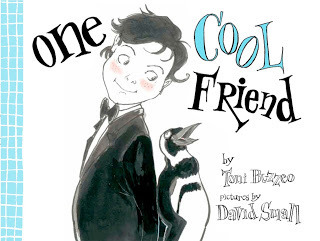
Today, however, I want to celebrate Toni's brand-new book, Just Like My Papa, a companion to her 2012 book, Stay Close to Mama, both warmly illustrated by Mike Wohnoutka.
Any little one eager to grow up to be big like Papa will connect with Kito's impatience to be king of the savanna. Toni weaves factual information about lions into this loving family story.
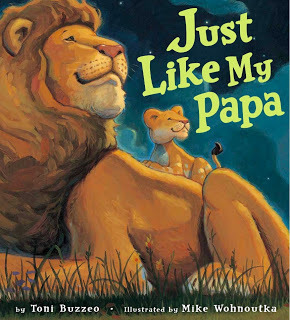
Here is what SLJ has to say: "The pacing is superb, with the right amount of drama for the youngest readers yet awash with reassuring paternal love and care for young Kito."
Here is what Kirkus says: "Children and their parents will appreciate this intimate look at this wild feline pair."
And here is what Toni herself has to say about her new book:
Lucky me! I wrote Just Like My Papa on the request of my editor. (An editor’s request is something of an author’s dream).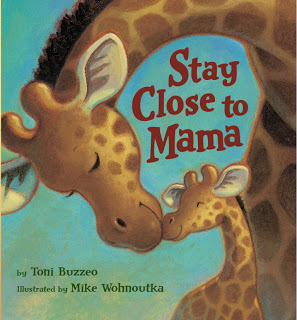
She’d loved the Mama-and-baby aspect of Stay Close to Mama about a pair of giraffes on the east African savannah and was hoping for a Papa-and-baby companion. Like any good librarian and author-researcher, I said that I’d dig in and find a likely father-and-child pair, one where the father sticks around to interact with the child.
But she’d already thought about that. “What about lions?” she asked.
I was reluctant. “Don’t male lions—errr—threaten cubs?” I asked.
No, as it happens, they don’t, so long as those cubs are their own (thank goodness)! As I researched and learned more about the fierce giant cats I’d watched on the savannah in Kenya, I realized that lion fathers do stick around and sometimes interact playfully with their cubs. That was the reassurance I needed that my little cub character, Kito, and his father, the King, might have a lovely and nurturing relationship, not unlike the relationship between my son Topher and my husband Ken. Kito wants to grow up to be just like his papa, the King, and he practices those skills at every turn.
This month I’m excited to be launching Just Like My Papa, the second book in a trilogy of companion books from Hyperion. It’s a perfect Father’s Day book.
Watch for the third book in 2014 featuring an elephant baby and her grandmother, the matriarch.
Don't miss this: there's a curriculum guide and reader's theater script on Toni's website!

Today, however, I want to celebrate Toni's brand-new book, Just Like My Papa, a companion to her 2012 book, Stay Close to Mama, both warmly illustrated by Mike Wohnoutka.
Any little one eager to grow up to be big like Papa will connect with Kito's impatience to be king of the savanna. Toni weaves factual information about lions into this loving family story.

Here is what SLJ has to say: "The pacing is superb, with the right amount of drama for the youngest readers yet awash with reassuring paternal love and care for young Kito."
Here is what Kirkus says: "Children and their parents will appreciate this intimate look at this wild feline pair."
And here is what Toni herself has to say about her new book:
Lucky me! I wrote Just Like My Papa on the request of my editor. (An editor’s request is something of an author’s dream).

She’d loved the Mama-and-baby aspect of Stay Close to Mama about a pair of giraffes on the east African savannah and was hoping for a Papa-and-baby companion. Like any good librarian and author-researcher, I said that I’d dig in and find a likely father-and-child pair, one where the father sticks around to interact with the child.
But she’d already thought about that. “What about lions?” she asked.
I was reluctant. “Don’t male lions—errr—threaten cubs?” I asked.
No, as it happens, they don’t, so long as those cubs are their own (thank goodness)! As I researched and learned more about the fierce giant cats I’d watched on the savannah in Kenya, I realized that lion fathers do stick around and sometimes interact playfully with their cubs. That was the reassurance I needed that my little cub character, Kito, and his father, the King, might have a lovely and nurturing relationship, not unlike the relationship between my son Topher and my husband Ken. Kito wants to grow up to be just like his papa, the King, and he practices those skills at every turn.
This month I’m excited to be launching Just Like My Papa, the second book in a trilogy of companion books from Hyperion. It’s a perfect Father’s Day book.
Watch for the third book in 2014 featuring an elephant baby and her grandmother, the matriarch.
Don't miss this: there's a curriculum guide and reader's theater script on Toni's website!
Published on April 19, 2013 06:00
April 18, 2013
Thursday's Thought
“I hate writing, I love having written.”
Dorothy Parker
Dorothy Parker
Published on April 18, 2013 07:00
April 16, 2013
Teacher Tuesday
I've had the pleasure of writing two nonfiction picture books with my friend, Mary Nethery. It's been such a rewarding experience as a writer and also as a reader, because it has opened my eyes to all the great nonfiction literature for children. That's one reason I was especially excited that Cindy Beggs not only agreed to participate in Teacher Tuesday, but she wanted to chat about nonfiction. Cindy currently teaches sixth grade at Yorbita Elementary, in La Puente, California; in the past, she's also taught first and fourth grades.
Let's first take a peek at Cindy's past: Favorite school lunch as a kid: I loved the turkey and gravy our school offered. (and now looking back I have no idea why… Best friend in grade school: I had two: Melissa and Sandi – we were three peas in a pod.Times you were the new kid in school: Fortunately – never. Teacher who inspired you to stretch: My 6th grade teacher was amazing! (Mrs. Habermehl) To this day I remember vivid images of being in her classroom. I also loved my high school math teacher: Mr. Baumunk. I was not the best math student but he was always so patient and never gave up on us. The one thing you always wished you could do in grade school but never achieved: This is a tough question… school came easily to me. Something I always wanted to do, although not school related, was play soccer. My mom wouldn’t let me – she thought it would be too dangerous.
Now let's dive in to how you connect kids and books, specifically nonfiction books. Talk a bit about nonfiction in your classroom.
Basically, every Friday, we focus on Non-fiction texts/books only. Students can choose what they want to read, either from books they already have checked out from school or classroom library, or the book bins I put at each table full of non-fiction. Sometimes they are given a Scholastic News issue to read. They read independently for some time in class, I observe and confer as they read, and then we come together for a mini-lesson that focuses on a non-fiction concept, skill, or reading strategy. Students then either go back to their independent reading, or they do a partner share. I also will read aloud to them from a non-fiction selection.
Can you talk about why you instituted Nonfiction Friday?
I instituted Nonfiction Friday for several reasons. I implement Reading Workshop in my classroom and used to have a non-fiction unit but realized that this wasn't enough. Some students love non-fiction and would read this independently during the week at times, and wouldn't always have the strategies, skills, or schema to navigate the text. I felt like these students were being left behind. I knew I needed to work in non-fiction sooner in the school year or more often in some way and then just had the epiphany to do Non-fiction Fridays.
Other reasons were that I also wanted to support my readers who love to read non-fiction (mostly boys) and also wanted to incorporate Non-fiction read alouds throughout the year as well. Non-fiction Fridays allows the opportunity for those who love and prefer non-fiction to deepen their love for NF and also gives strategies to navigate more challenging texts. I also thought it was important for students to broaden their schema and I think NF helps that.
Non-Fiction Friday also encourages students who almost never pick up non-fiction to read non-fiction at least once per week. I still teach a non-fiction unit now in addition to our Non-Fiction Fridays.
Tell us a bit about what NF Fridays look like. What is required of you to prepare for them?
NF Fridays starts with students choosing to read a NF text that they can finish within the class period. I have buckets at their tables or they may read something they may have checked out from the library. Students read the text independently first and complete a reading response that I created so they are interacting with the text. That form changes somewhat as the year progresses but the basics are for the students to jot down new learning and wonderings. I then plan a mini-lesson for that day – I usually have a series of them for NF Fridays. These mini-lessons are either strategy based to navigate NF, lessons to teach NF text structures, and/or lessons to teach our state standards.
I prepare the book buckets ahead of time – making sure there are a variety of topics, text layouts, and some biographies and autobiographies (most of these are picture book narratives).
What is required of the students?
In addition to what was mentioned above, students are also expected to be prepared to “teach” another student that day what they learned during their NF reading. Whether it’s based off a new topic or a text feature or a strategy they tried.
Why do you think this is a worthwhile addition to your curriculum?
First and foremost, NFF helps build their world wide knowledge. Also, much of the reading we do as adults is NF and I want to prepare them for the real world as much as I can. Or at least, plant seeds. (Will also help support our Common Core standards…)
I can see how this might help students who already love/read nonfiction. But what about the kids that aren’t drawn to this genre?
For those who aren’t drawn to the genre: I do mini-lessons with the students introducing them to the Dewey Decimal system which I think opens their eyes up to topics they may not have thought about before. I encourage them to think about people they want to know more about or periods in our history. I find that eventually most of my students look forward to NFF.
What skills do you see your students gaining from nonfiction Friday?
They are expected to learn the state standards for NF reading for CA and also life-long reading skills and strategies to navigate NF.
Do you have a favorite anecdote of how Nonfiction Friday has changed a student?
What I hear often from many students: “I really like NF now.” – That’s a winning statement for me every time!
Would you encourage other teachers/librarians implement this program? Why or why not?
I think it depends on what their reading program looks like in general. I know many of our teachers on staff incorporate NF in some way whether it’s through something like Scholastic News or TIME for Kids or current events. I have done a quick overview of what I do with NFF to our staff at a meeting once – I think some teachers took some ideas away from that, but I think most teachers still do a NF unit.
What has most surprised you about Nonfiction Fridays?
The excitement from the students wanting to share what they learned during their reading. I also love just observing their faces and reactions as they read NF – those moments where they are like, “Oh my goodness! That’s amazing! I had no idea that…!” What do you wish you could tell publishers/authors about nonfiction for younger readers?
I think, overall, there is great NF being published nowadays. And quite the variety as well. So first, I would love to tell them, “THANK YOU!” And second, “Keep writing and publishing great NF!”
For more of Cindy's thinking about nonfiction int he classroom, visit her blog Paper Two Ways or follow her on Twitter: @cb6luvs2read
Published on April 16, 2013 06:30



